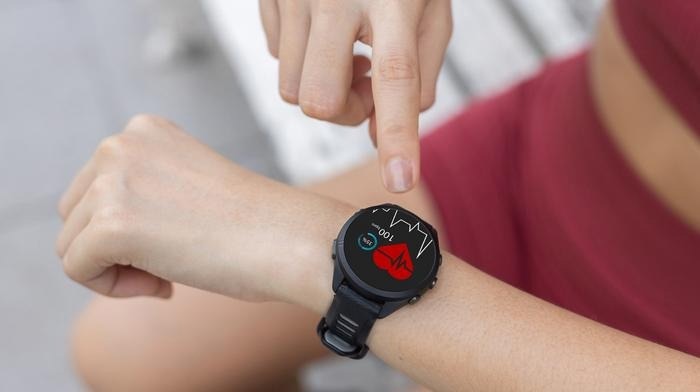Reviewed by Lexie CornerMay 6 2025
Researchers at the University of Mississippi, led by Assistant Professor Kasem Khalil, have developed a new technology that detects heart attacks faster and more accurately than current methods.
 Researchers are developing a lightweight, efficient chip that can be implanted on wearable devices to detect heart attacks in real time. Detecting a heart attack as it happens can save patients critical time in getting lifesaving treatment. Image Credit: John McCustion/University Marketing and Communications
Researchers are developing a lightweight, efficient chip that can be implanted on wearable devices to detect heart attacks in real time. Detecting a heart attack as it happens can save patients critical time in getting lifesaving treatment. Image Credit: John McCustion/University Marketing and Communications
For this issue, a few minutes or even a few extra seconds is going to give this person the care they need before it becomes worse. Compared to traditional methods, our technology is up to two times faster, while still highly accurate. Our target was not only to increase performance for classifying heart attacks. We are also focusing on the design. If we want to make this device a usable machine for any person, that means it has to be something lightweight and economic.
Kasem Khalil, Assistant Professor, Electrical and Computer Engineering, The University of Mississippi
Every 40 seconds, someone in the U.S. dies from a heart attack. The most common cause of death in the US is heart disease, which is a group of underlying conditions that can result in a heart attack.
To address this, Khalil and his team developed a chip that uses artificial intelligence and advanced mathematical models to analyze electrocardiograms (ECGs) - graphs of the heart’s electrical activity - and detect heart attacks in real time.
The resulting technology is 92.4 % accurate, outperforming many existing methods. It is also small and energy-efficient enough to be built into wearable devices.
We wanted to be able to implement this in a way that is real. This is portable hardware that can be in wearable or monitoring devices. This method will save lives because we can monitor the heart in real time.
Tamador Mohaidat, Doctoral Student and Study Co-Author, The University of Mississippi
Mohaidat, from Irbid, Jordan, focused on developing the artificial neural network, while Md. Rahat Kader Khan handled the device’s software. Khan, a second-year graduate student in computer engineering from Dhaka, Bangladesh, said what makes the Khalil lab unique is its comprehensive approach, covering every aspect of the technologies they aim to create.
Some labs only focus on the software part, and they do not think about the hardware that is needed, but in our lab, we focus on the whole product. Each of us has a responsibility, but we work together. That is how we optimize the whole system, by focusing on the overall architecture.
Md. Rahat Kader Khan, The University of Mississippi
Current methods for detecting heart attacks often require a hospital visit. Patients typically need an ECG or blood test to confirm the diagnosis, which takes time they may not have.
The researchers believe that wearable devices, such as phones or smartwatches, could speed up diagnosis and help patients receive treatment sooner.
Khalil said, “When a patient is having a heart attack, the sooner you can treat them, the less likely they are to have permanent damage. There is a huge time-sensitive element to heart attacks.”
Khalil and his team are continuing to refine the technology and believe it could have broader applications in healthcare.
Khalil said, “We want to be able to predict or identify many problems using technology like this. Whether that is heart attacks or seizures or dementia. The detection of a disease or condition depends on the disease itself, but we are working to find faster, more efficient ways of doing that.”
Journal Reference:
Khalil, K., et al. (2025). Enhanced Heart Attack Detection with Neural Networks. Lecture Notes in Networks and Systems. doi.org/10.1007/978-3-031-82377-0_44.